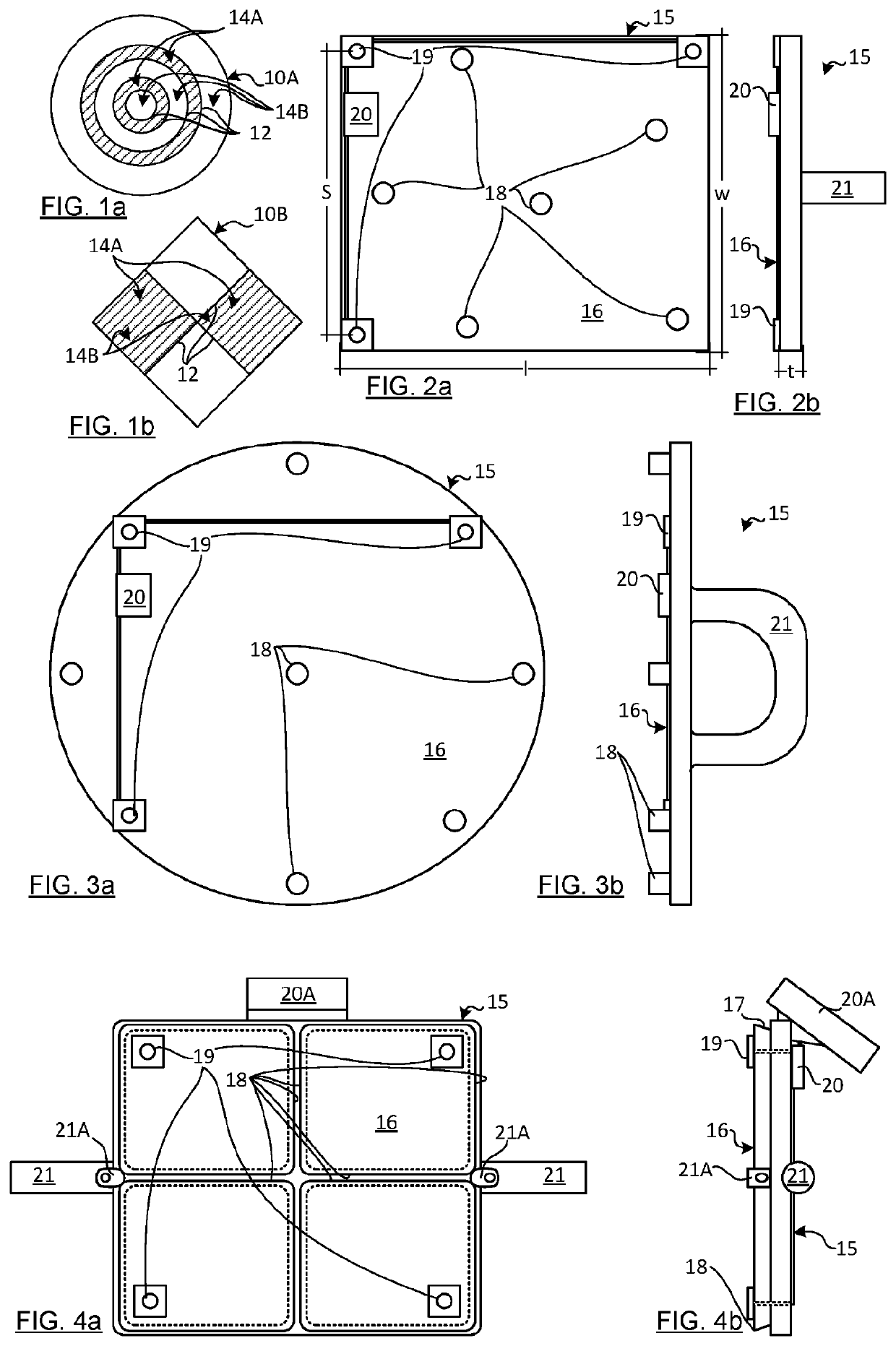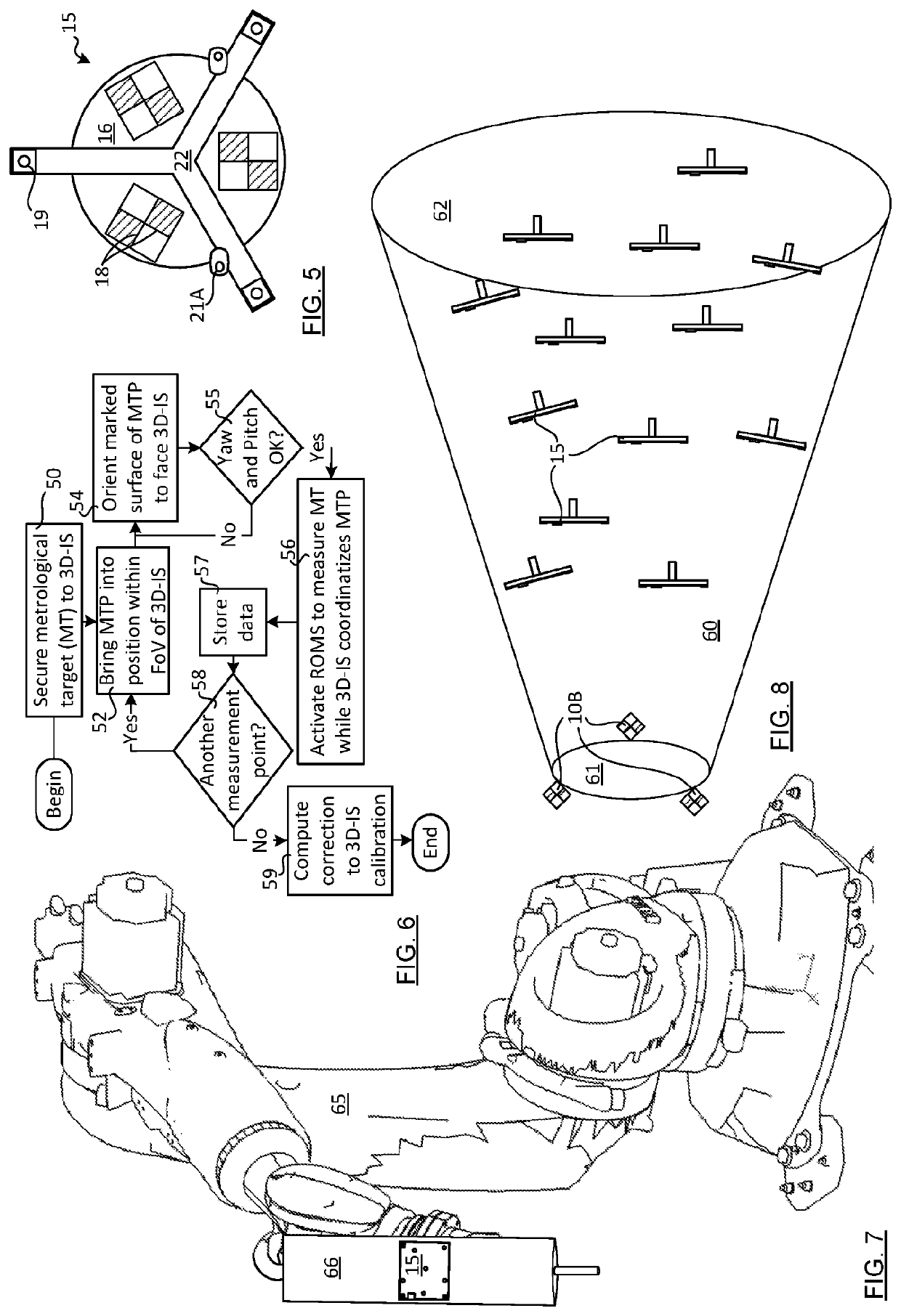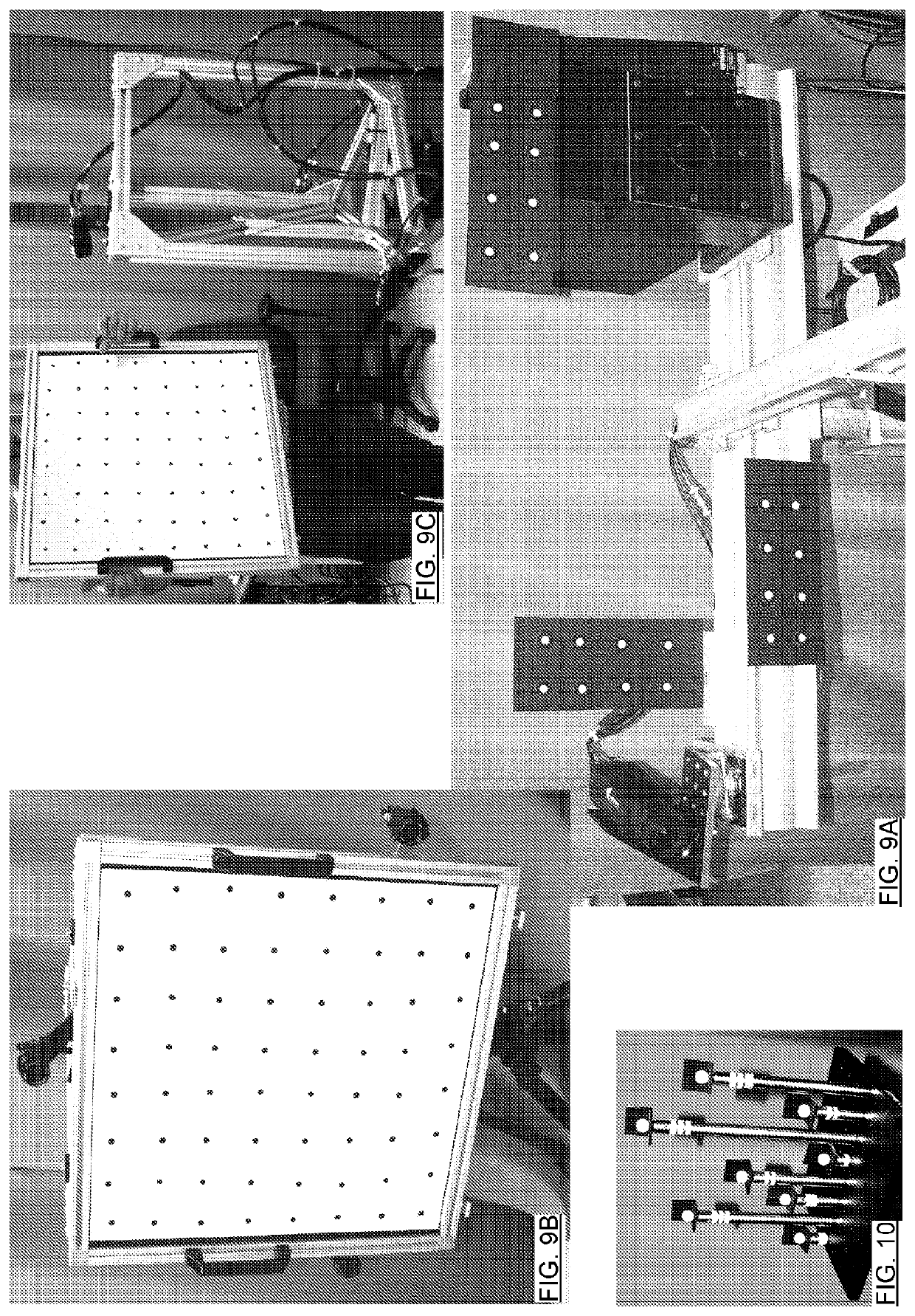Kit and method for calibrating large volume 3D imaging systems
a 3d imaging and large volume technology, applied in the field of calibration of large volume 3d imaging systems, can solve the problems of calibration process, few entities could invest, unwieldy and expensive use to be portable, etc., and achieve the effect of convenient movement across the volume, accurate positioning of features, and low cos
- Summary
- Abstract
- Description
- Claims
- Application Information
AI Technical Summary
Benefits of technology
Problems solved by technology
Method used
Image
Examples
example
[0086]The present invention has been demonstrated using a structured light 3D-IS (SLS) (FoV of ˜8 m3=2 m×2 m×2 m) as shown in FIG. 9A. The structured light SLS includes a stand, a special purpose projector with optics as taught in Applicant's patent U.S. Pat. No. 8,754,954, a camera, and a computer for collecting data and applying a deconvolution process as explained in Applicant's patent U.S. Pat. No. 8,411,995. The MTP has also been used to calibrate.
[0087]FIG. 9A also shows a series of MTs in the form of standard photogrammetric markers. The markers were applied as photogrammetric stickers (Synthetic paper: Mactac metro label white perm; the dots are 1 cm diameter, and surrounded by black ink printed by Spicers Canada ULC on commercial printer) that were mounted to respective steel plates. The stickers are black with white circular targets having a high absorbance contrast to define the target. The minimum number of sticker is three, typically we use 24 markers. The 24 targets we...
PUM
 Login to View More
Login to View More Abstract
Description
Claims
Application Information
 Login to View More
Login to View More - R&D
- Intellectual Property
- Life Sciences
- Materials
- Tech Scout
- Unparalleled Data Quality
- Higher Quality Content
- 60% Fewer Hallucinations
Browse by: Latest US Patents, China's latest patents, Technical Efficacy Thesaurus, Application Domain, Technology Topic, Popular Technical Reports.
© 2025 PatSnap. All rights reserved.Legal|Privacy policy|Modern Slavery Act Transparency Statement|Sitemap|About US| Contact US: help@patsnap.com



